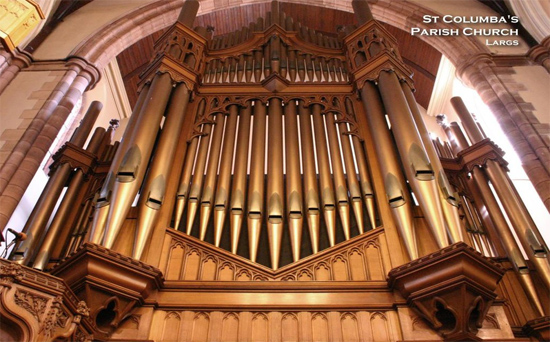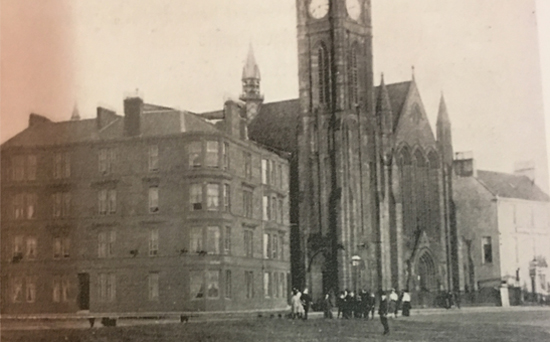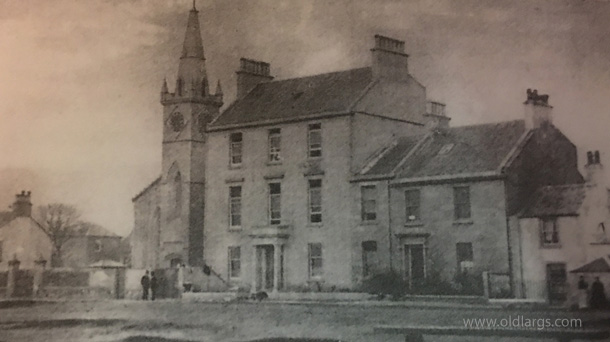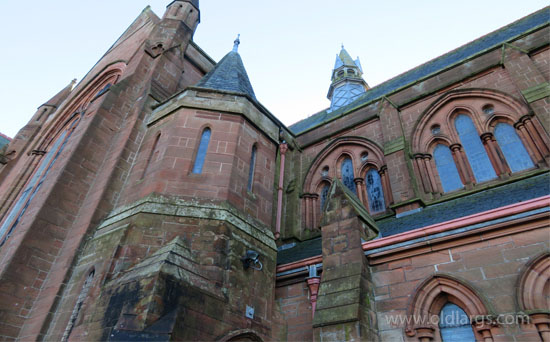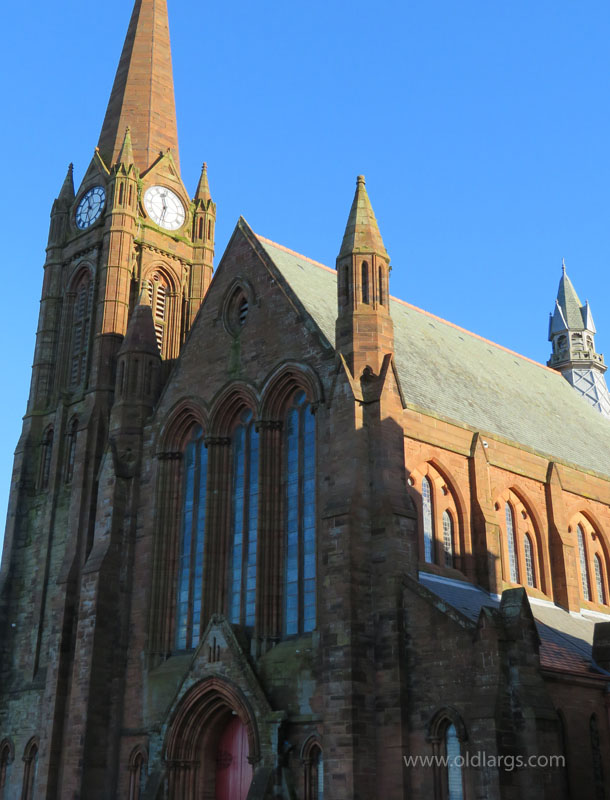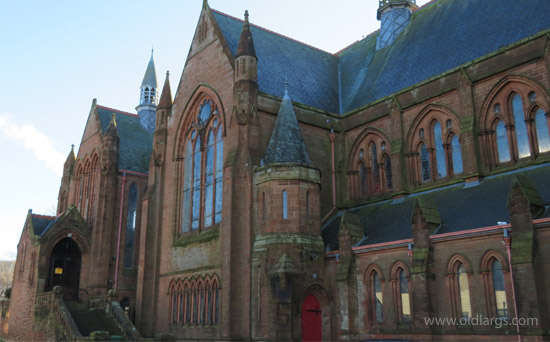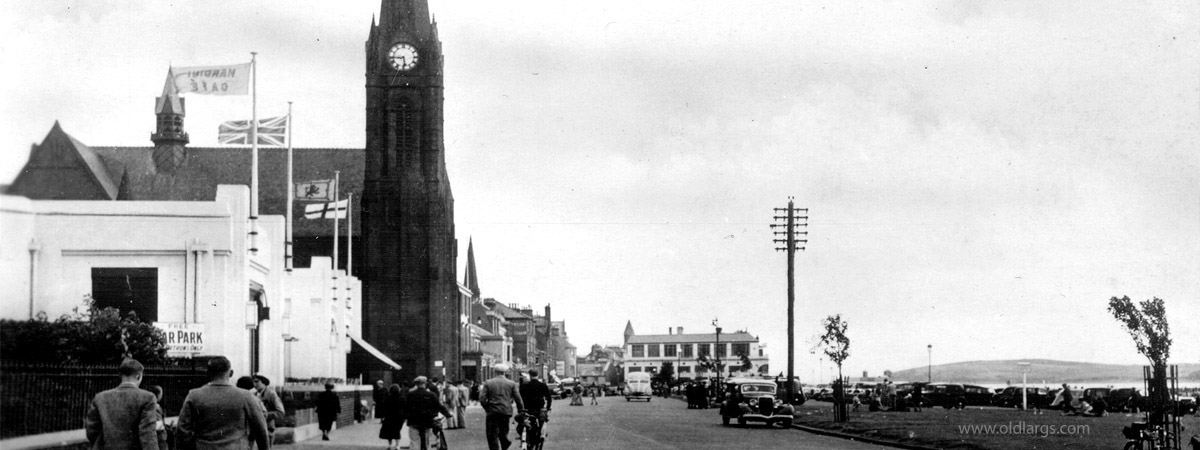
A walk along Greenock Road to Gallowgate Street
In this section of our walk we reach the world famous Nardini's Cafe and the magnificant Victorian Gothic St Columbas church which has domonated the sky line of Largs for over 120 years.
As we pass this area we will across Nelson Street on the left. Weaver’s houses began to appear in Nelson Street from the early 1800's. As the weaving industry declined the houses became popular with holiday makers and new buildings continued to be built up to the early 1900's. When number 73 Nelson Street was being constructed seven Bronze Age burial urns were discovered. These are now on display at the Kelvingrove Museum and Art Gallery in Glasgow.
Nardini's
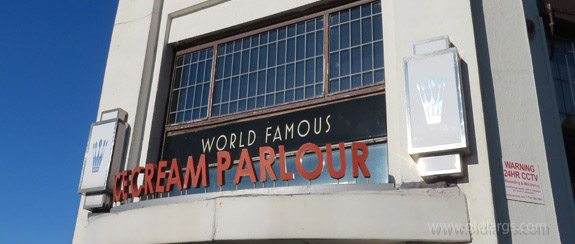
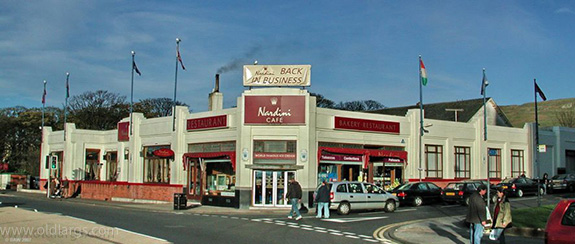
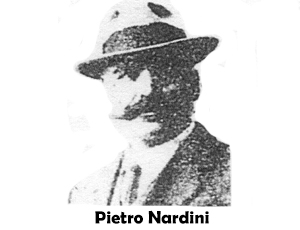
Todays Nardinis Cafe is built on the grounds of Auchenean House which can be seen on maps dating back to 1820's. The grounds of Auchenean House became available in 1934. The two bidders for the site were the Pietro Nardini and Harry Kemp the king of North Ayrshire Amusements at the time. Mr Kemp wanted to build a cinema on the site.
During the bidding process a solicitor for Mr Kemp apparently got cold feet when the bidding went to £4400 and the Nardinis secured the site. Mr Kemp later claimed that he would have but the bid up to £10,000 if he had been there himself. The villa of Auchenean still stood at the back of the cafe for many years until it was demolished as part of the McCarthy and Stone redevelopment of the site. It was used as offices and a store.
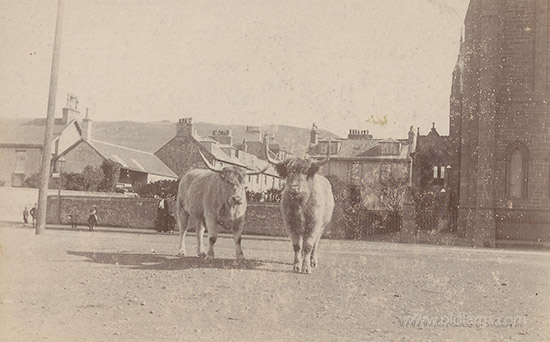
On its opening day over 4000 customers attended the cafe's opening. It held 300 persons while the restaurant had seating for 150.
Pietro died soon after and his son Nardino and two brothers opened Nardini’s café in 1935, eventually passing down management to Nardino’s sons, Aldo and Peter.
The cafe was often described as the most elaborate of the kind in Scotland with its facilities providing the height of comfort and luxury. It soon became one of the most popular business of its kind in the West of Scotland.
A carry out fish supper cost sixpence. A fish tea was 1s 9d
When the cafe opened a bandstand was built (which is still there) and a 4 to 6 peice orchestra in neat tunics played along with a male singer who would move across the tables serenading the girls.
The outbreak of WW2 was a difficult time for the Nardinis. When Mussolini sided with Hitler all able bodied Italians were sent into interment on the Isle of White. This was particularly ironic to Pietros brother Augusto since he has served in the Italian army with the allies in World War 1.
Later this rule was changed but not before they had spent 3 years on the Isle of Man. The wife’s of the brothers successfully carried on the business in their absence.
In its heyday the popularity of Nardini's was un equalled. It provided refreshments for hordes of holiday makers and day-trippers who would arrive at Largs by train or by steamer to the pier. In 1974 they built an ice-cream plant behind the cafe.
Nardini's soon became famous for their award-winning ice cream with their many prize trophy’s displayed above the coffee machines.
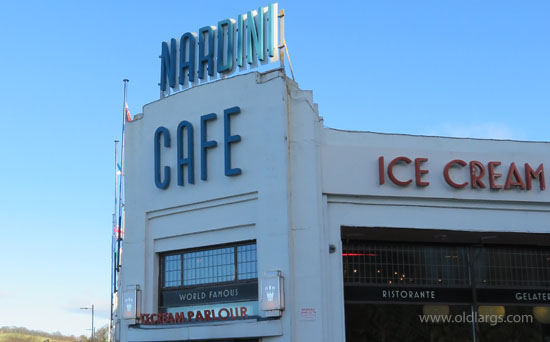
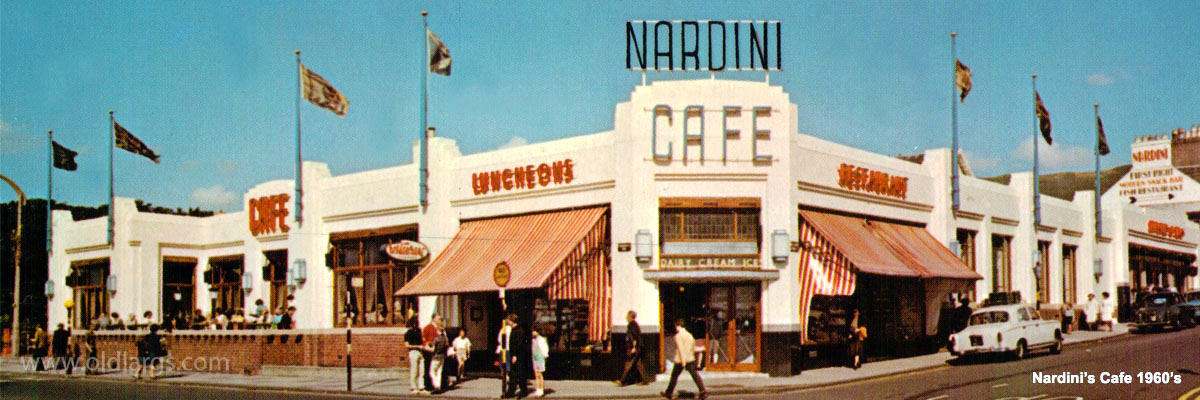
In 1997 a successful local businessman Mr David Hendry was asked to help turn round the business which at that time was on the brink of liquidation. Mr Hendry's appointment into the business divided the family especially between Aldo and Peter and their cousins Ricardo, Roberto and Fabio who were also board members. Legal arguments broke out within the family mainly on the differences in moving the business forward. Eventually Ricardo, Roberto and Fabio left the family business.
For a time the business began to improve. A major cash investment was made to bring the ice cream manufacturing up European standards and plans were made to franchise the Nardini brand by opening up new cafe's across Scotland. However by this time the business disagreements yet again began to divide the remaining family members apart and again their numbers reduced with Aldo eventually leaving the board.
Further legal disagreements followed regarding the use of the name Nardini. Sadly in 2003 Nardini's went into receivership and the site was put up for sale.
In 2004 a consortium which included Tony Macaroni owner Giuseppe Marini was formed to purchase the site and restore the cafe to its former glory. The land at the back of the Cafe was sold to make way for a McCarthy and Stone Flats development and the case raised for this helped fund the cafe refurbishment.
After lying empty and disused for four years the new Nardini cafe opened in December 2008 following a £2.5 million refurbishment. In 2015 when the Sunday Mail named Largs’ Nardini’s the best ice cream parlour in Scotland.
More information about Nardini's can be found on their web site.
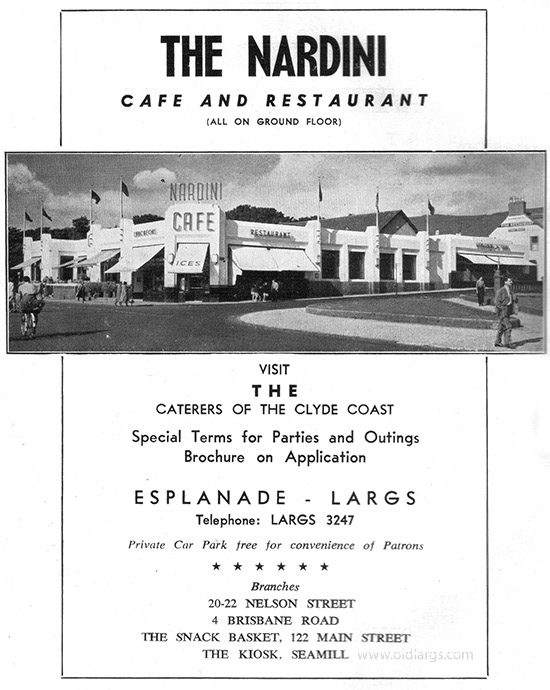
St Columba's Parish Church
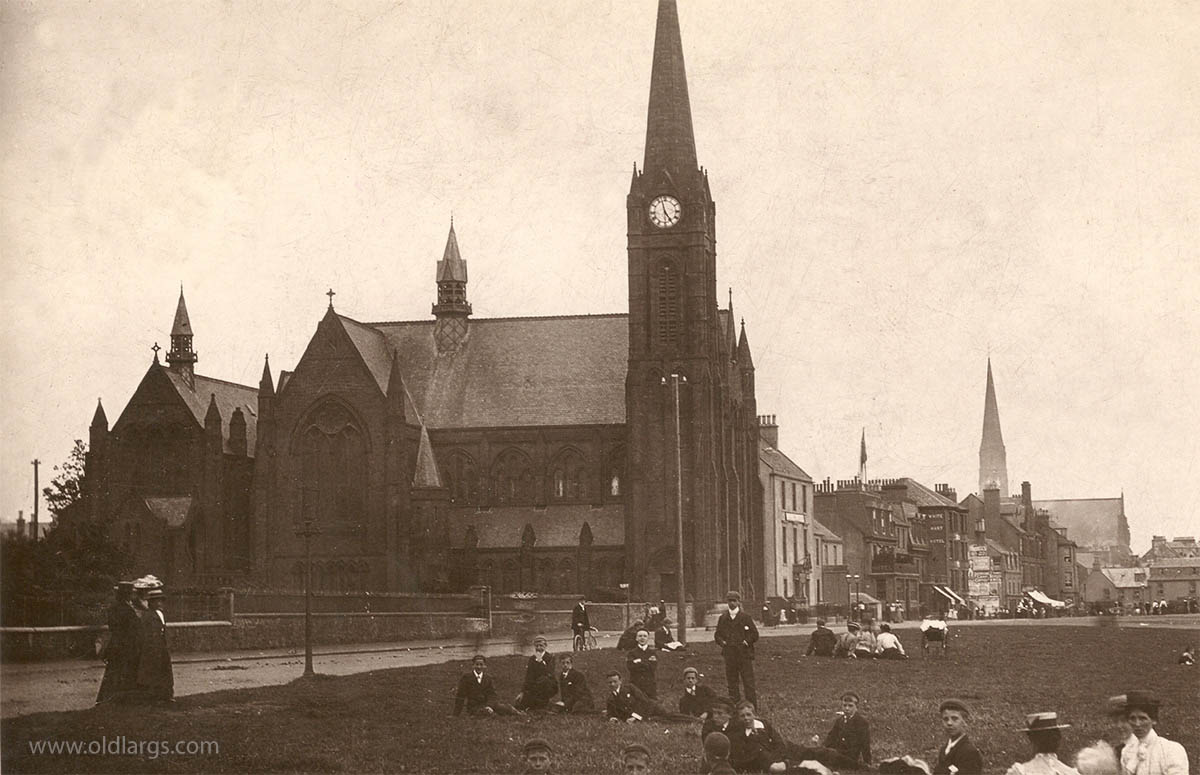
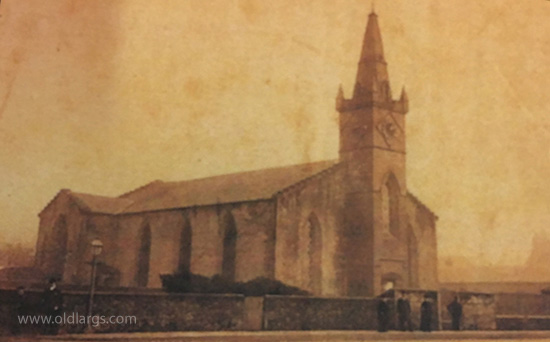
Skelmorlie Aisle was original the north transept of the old largs church and was built in 1636. With the exception of the Aisle all other evidence of the original church has disappeared. Skelmorlie Aisle was built as mausoleum for Sir Robert Montgomerie and his wife Dame Margaret Douglas. Both lie within it to this day.
The church was demolished in 1801 and a new church built on the site of the existing St Columba's in 1812. The new church had a gallery around three sides and could accommodate up to 900 people. In 1832 this building was extended with new aisles on the east end.
By the late 1890's the church congregation had outgrown the 1812 building. In 1892 this building was demolished and replaced with today’s church. It is built of Ballochmyle sandstone in the early English Gothic style. The clock tower is 150 feet high.
Architects were Henry Steel and Andrew Balfour from Glasgow. The organ was built by Willis & sons from London.
The grass area to the north of the church opposite Nardinis was purchased in 1911 by the church to prevent the building of a 4 story 54 feet high tenement.
More details of St Columba's Parish Church on their web site.
